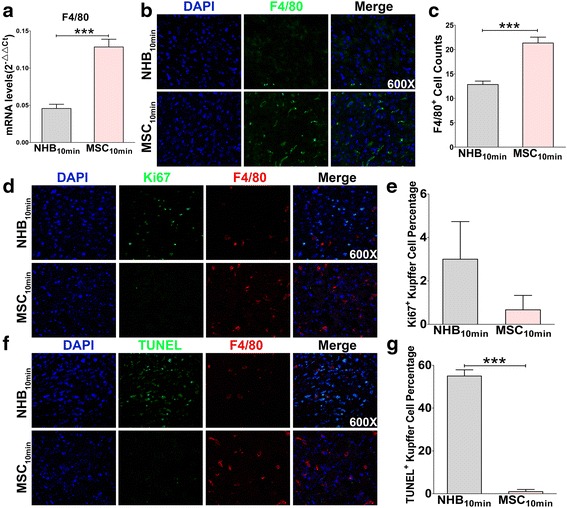Fig. 4.

Mesenchymal stem cells (MSCs) protect and restore Kupffer cells by inhibiting apoptosis but not by promoting proliferation. At 6 h post-transplantation, liver grafts from each group were collected for quantitative RT-PCR analysis and immunofluorescence staining. a Intrahepatic mRNA level of F4/80 was detected by quantitative RT-PCR (N = 6 for each group). b F4/80 immunofluorescence staining of frozen liver graft tissues were visualized by confocal scanning. Representative images from one experiment are shown at 600× magnification. c Intrahepatic F4/80-positive cells in each section were counted for statistical analysis (N = 6 for each group). d Proliferation of Kupffer cells was detected by Ki67 (green) and F4/80 (red) double staining. Representative images from one experiment are shown at 600× magnification. e The percentage of Ki67+ F4/80+ cells in total F4/80+ Kupffer cells was counted and calculated for statistical analysis (N = 3 for each group). f Apoptosis of Kupffer cells was detected by TUNEL (green) and F4/80 (red) double staining. Representative images from one experiment are shown at 600× magnification. g The percentage of TUNEL+ F4/80+ cells in total F4/80+ Kupffer cells was counted and calculated for statistical analysis (N = 3 for each group). a, c, e, g Results are presented as mean ± SEM for each group. ***P < 0.001. NHB non-heart-beating, TUNEL terminal deoxynucleotidyl transferase dUTP nick end labelling
